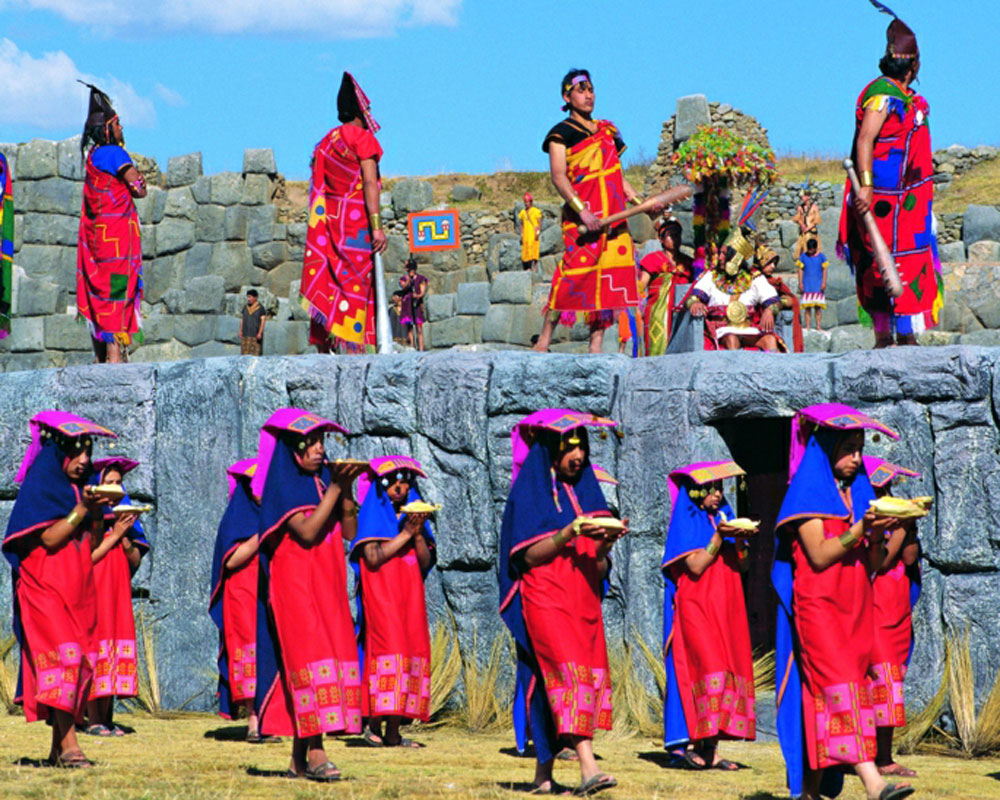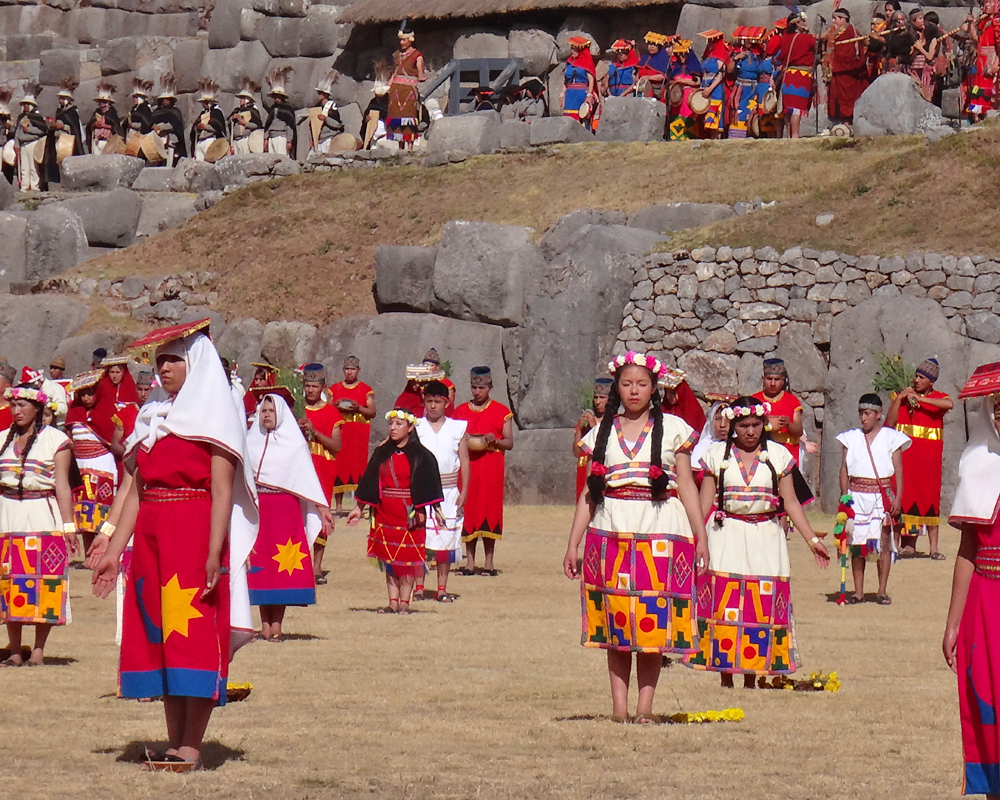THE INTI RAYMI FESTIVAL
When tourists come to South America looking to explore the last remnants of ancestral Incan life, thoughts of Machu Picchu might first come to mind. Incan values and their ancient practices may seem like a distant memory for many, but there are old traditions still held today by Peruvians. The most noteworthy, and a star attraction for history buffs, is the Inti Raymi festival held on the 24th of June every year.
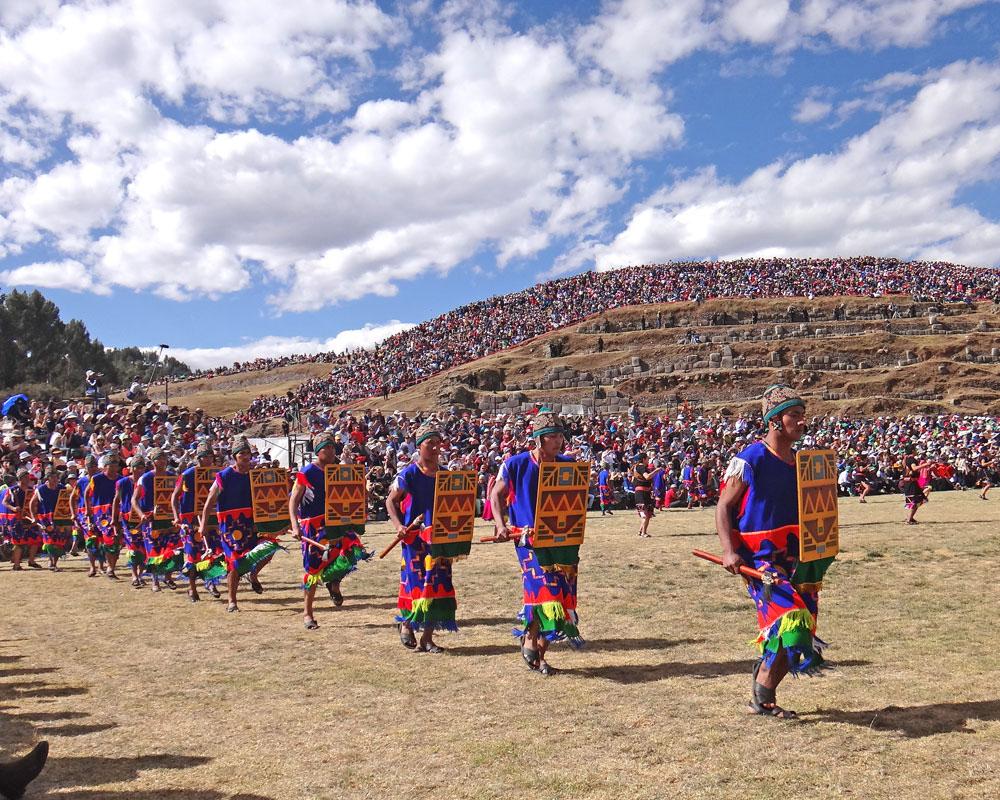
Inti Raymi performers enter the main festival area at Saqsaywaman in Cusco. Phot Credit: Mike Cairney
WHAT IS THE INTI RAYMI FESTIVAL?
The Inti Raymi (‘Sun Festival’ in the local Quechua language) is a religious ceremony held in honour of the Inca god of the sun ‘Inti’. Originating from the days of the Inca empire, this ceremony is considered the most important of three major ceremonies that were held in Cusco (the capital of the Inca Empire) as it celebrates the winter solace in the southern hemisphere; the shortest day of the year in relation to time between sunrise and sunset and the official Incan new year. The first Inti Raymi was created by Sapa Inca Pachacuti and held in 1412, according to chronicler Garcilaso de la Vega, to celebrate the new year in the Andes. The ceremonies held were to represent the origin of the Incas and their mythical origins. The ceremonies lasted for 9 days and consisted of colourful dances and processions, including animal sacrifices to give thanks to the Andes goddess of earth and time Pachamama (Inti’s wife) to ensure they had good cropping seasons for the year. The ceremonies were held in the Inca Empire until 1535 when the Spanish invaded and catholic priests banned the ceremony.
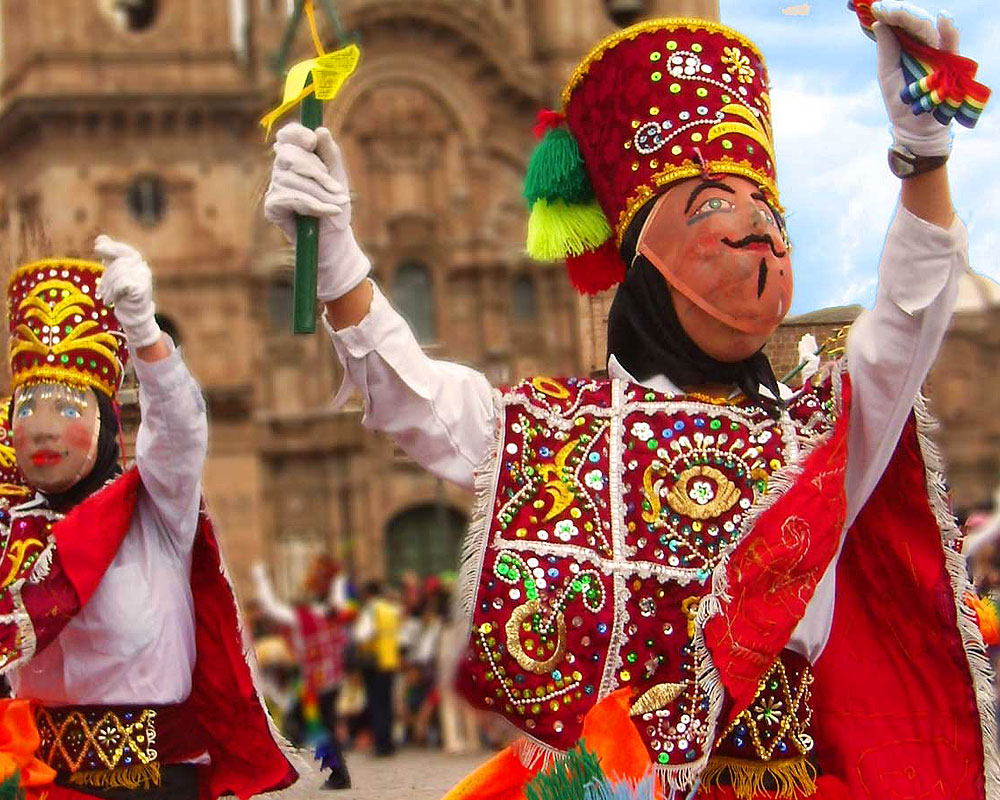
Visitors can observe richly details outfits and masks worn by performers at the festival
WHY SHOULD IT BE ON MY TRAVEL BUCKETLIST?
The ceremony was considered a lost tradition until 1944 when a reconstruction of the ceremony was directed by Faustino Espinoza Navarro. The first reconstructed ceremony was based around the chronicles of Garcilaso de la Vega and was mostly reincarnations of various religious ceremonies performed by indigenous actors. This ceremony took place at the ruins of Saksaywaman (2km from the original celebration ground in Cusco) and has been held here yearly ever since, attracting many tourists and visitors looking to witness the celebrations in person. You’ll be thankful to hear that today, no sacrifices are made and the celebration consists of Peruvian music and dancing events as well as locals wearing animal costumes including snakes, pumas and condors, colourful outfits (the woven aya human mask being the most memorable) and sharing food with other celebrators and visitors. Even though the ceremony has been criticised for being too theatrical, the performances held give an interesting interpretation of the stories about the Inca’s heyday, particularly the performance depicting the Inca emperor Sapa Inca being carried to the hilltop edifice in a golden chariot.
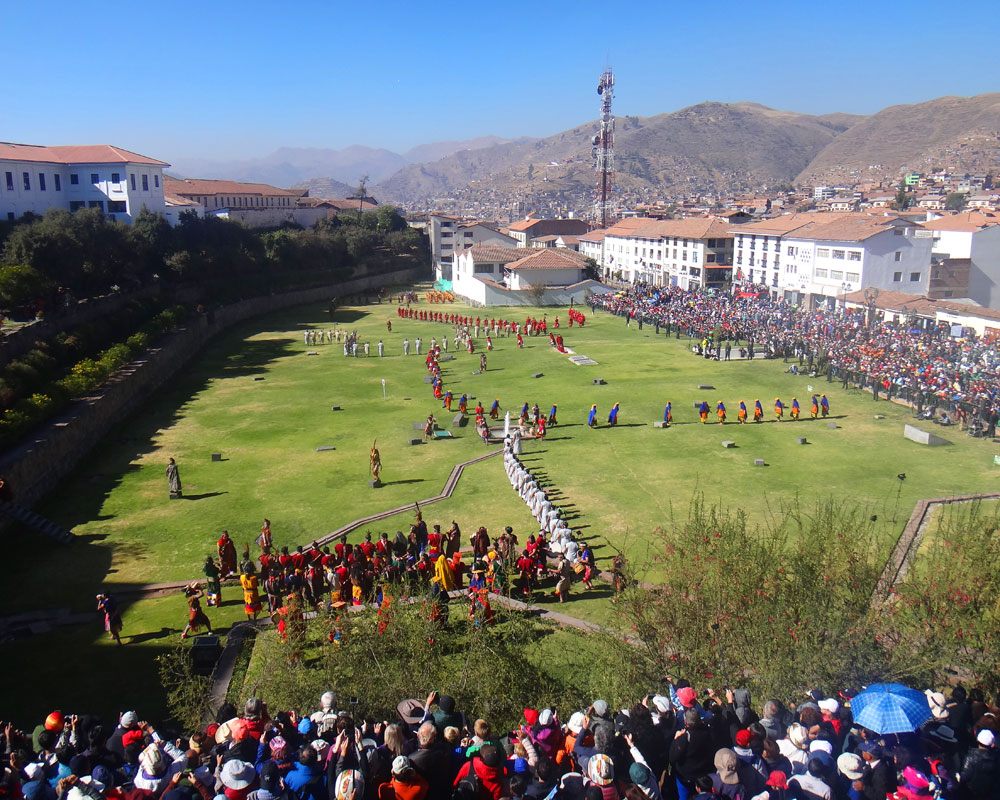
The celebrations for Inti Raymi take place all over the city.
HOW CAN I VISIT?
There are two ways to enjoy the Inti Raymi; you can reserve seats for the ceremony which you need to ensure you book well in advance, which will give you excellent views over the parade. The other option is to stand with the crowds. This is the best way to experience the festival, the views can be just as good and standing with locals gives you a better understanding of the significance this festival has on the local people of Cusco. Be sure to reserve accommodation in advance as Cusco gets busy around the time of the festival and many hotels are full of both local and foreign tourists. The old saying “to experience another’s culture is be amongst its people” applies when venturing to Peru. The ruins of Machu Picchu and other surrounding archaeological wonders can only say so much about the history of this incredible country, the Inti Raymi festival helps bring that culture back to life, if only for a day. Aficionados of south American and Incan history should not miss this event and the experiences you’ll have here will be cherished for years to come.
Take a look at our ‘Peru in Depth‘ itinerary which can be combined with a visit to the Inti Raymi festival. Alternatively, browse our list of luxury hotels in Cusco which offer a comfortable place to stay before, during and after the festival has taken place.
Blog post by Alex Flemming, Humboldt Travel



